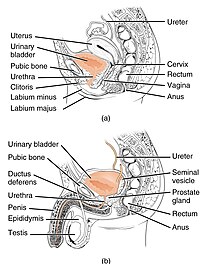
Photo from wikipedia
ABSTRACT Introduction Antimicrobial resistance continues to be a major public health concern due to the emergence and spread of multi-drug resistant (MDR) organisms, including extended spectrum ß-lactamase (ESBL) and carbapenemase… Click to show full abstract
ABSTRACT Introduction Antimicrobial resistance continues to be a major public health concern due to the emergence and spread of multi-drug resistant (MDR) organisms, including extended spectrum ß-lactamase (ESBL) and carbapenemase producing Enterobacterales. Plazomicin is a novel aminoglycoside that demonstrates activity against MDR gram-negatives, including those producing ESBLs and most carbapenemases, and retains activity against aminoglycoside modifying enzymes as a result of structural modifications. The information discussed is meant to assist in identifying plazomicin’s place in therapy and to expand the clinician’s armamentarium. Areas covered Herein, we review the pharmacology, microbiology, clinical efficacy, and safety of plazomicin. To gather relevant information, a literature search was performed using PubMed, Ovid, and Google Scholar electronic databases. Search terms used include plazomicin, ACHN-490, extended spectrum ß-lactamase, ESBL, CRE, aminoglycoside modifying enzymes, and AME. Additional information was obtained from FDA review documents and research abstracts presented at international conferences. Expert opinion Plazomicin is a promising carbapenem or β-lactam/β-lactamase inhibitor-sparing alternative for the treatment of complicated urinary tract infections caused by MDR Enterobacterales. Although robust data for bloodstream infections and bacterial pneumonias are lacking, plazomicin may be considered in individual clinical scenarios if combination therapy is warranted provided supportive microbiological data and therapeutic drug monitoring are available.
Journal Title: Expert Review of Anti-infective Therapy
Year Published: 2020
Link to full text (if available)
Share on Social Media: Sign Up to like & get
recommendations!